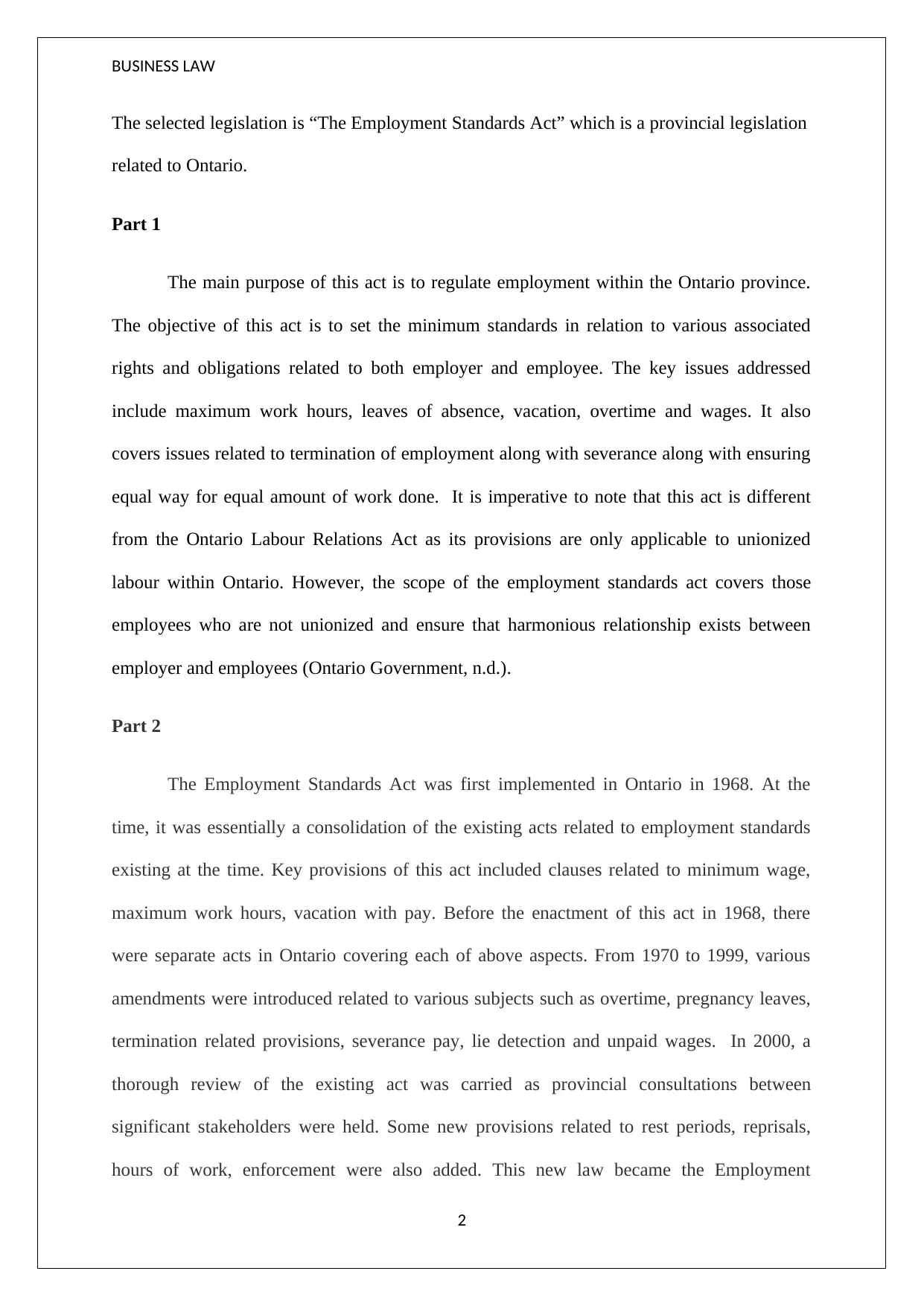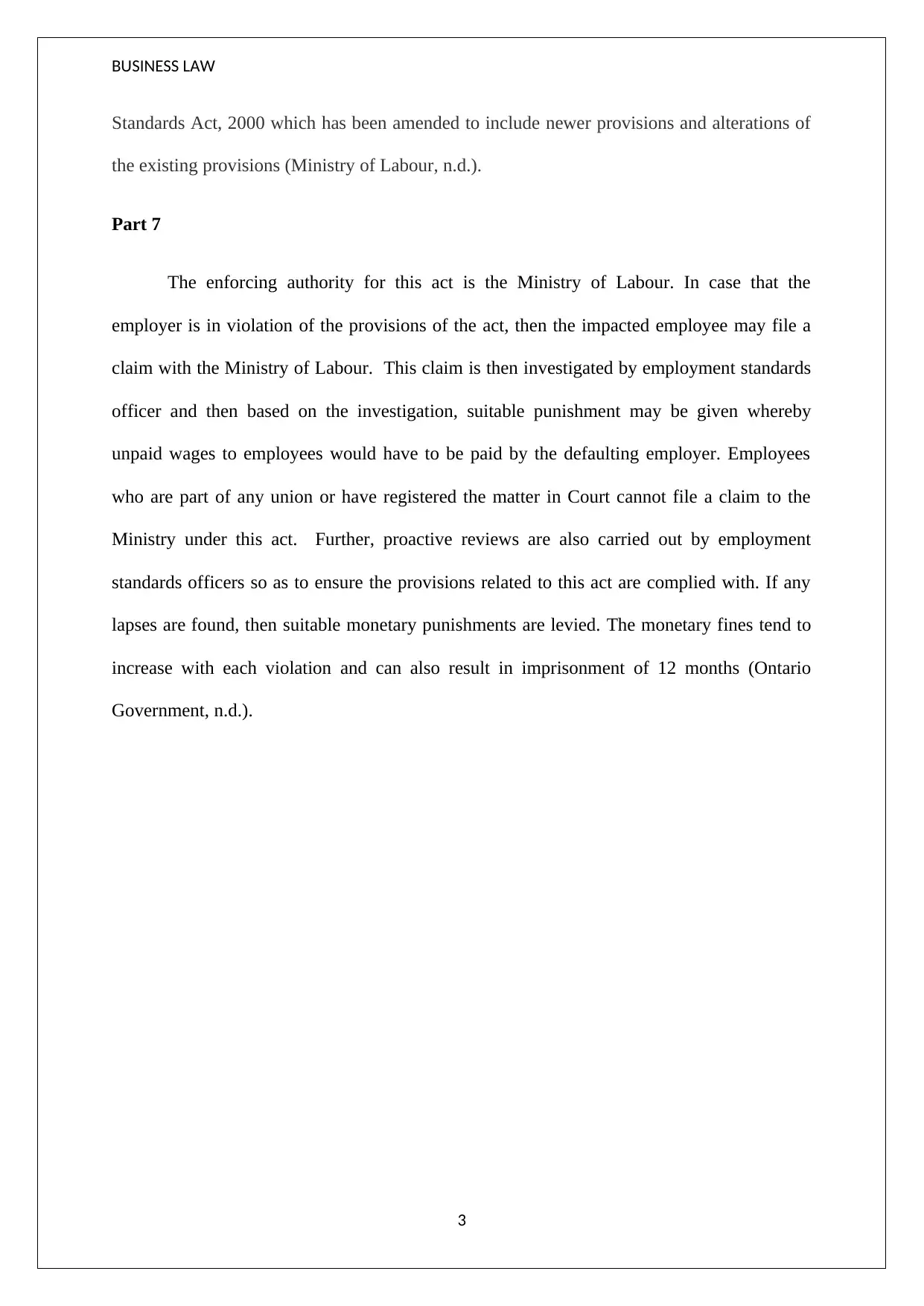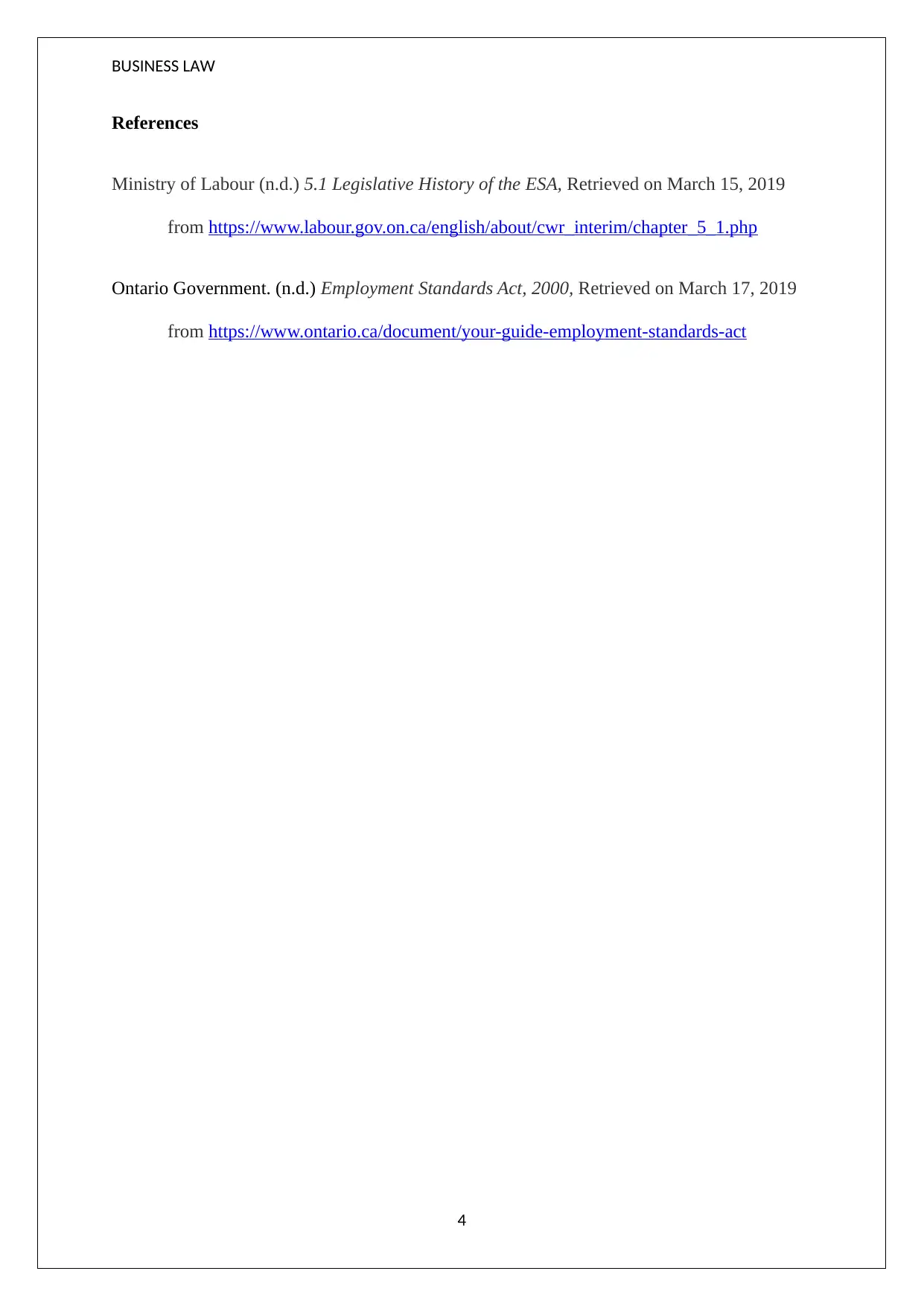Business Law Assignment: Analysis of Ontario Employment Standards Act
VerifiedAdded on 2023/04/06
|4
|509
|342
Report
AI Summary
This report provides a detailed analysis of the Ontario Employment Standards Act (ESA), focusing on its purpose, key issues, and historical context. The report begins by outlining the ESA's primary objective of regulating employment within Ontario, setting minimum standards for employee rights and employer obligations, including work hours, leaves, vacation, overtime, wages, and termination. It differentiates the ESA from the Ontario Labour Relations Act, emphasizing its application to non-unionized employees. The report then traces the ESA's evolution, from its 1968 implementation to subsequent amendments and the 2000 revision, highlighting key provisions such as minimum wage, work hours, and vacation pay. The report also discusses the role of the Ministry of Labour as the enforcing authority, including the process for filing claims, investigations, and potential penalties for violations, such as unpaid wages, fines, and imprisonment. The report concludes by summarizing the ESA's significance in maintaining harmonious employer-employee relationships and ensuring fair employment practices within Ontario.
1 out of 4











![[object Object]](/_next/static/media/star-bottom.7253800d.svg)